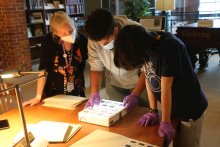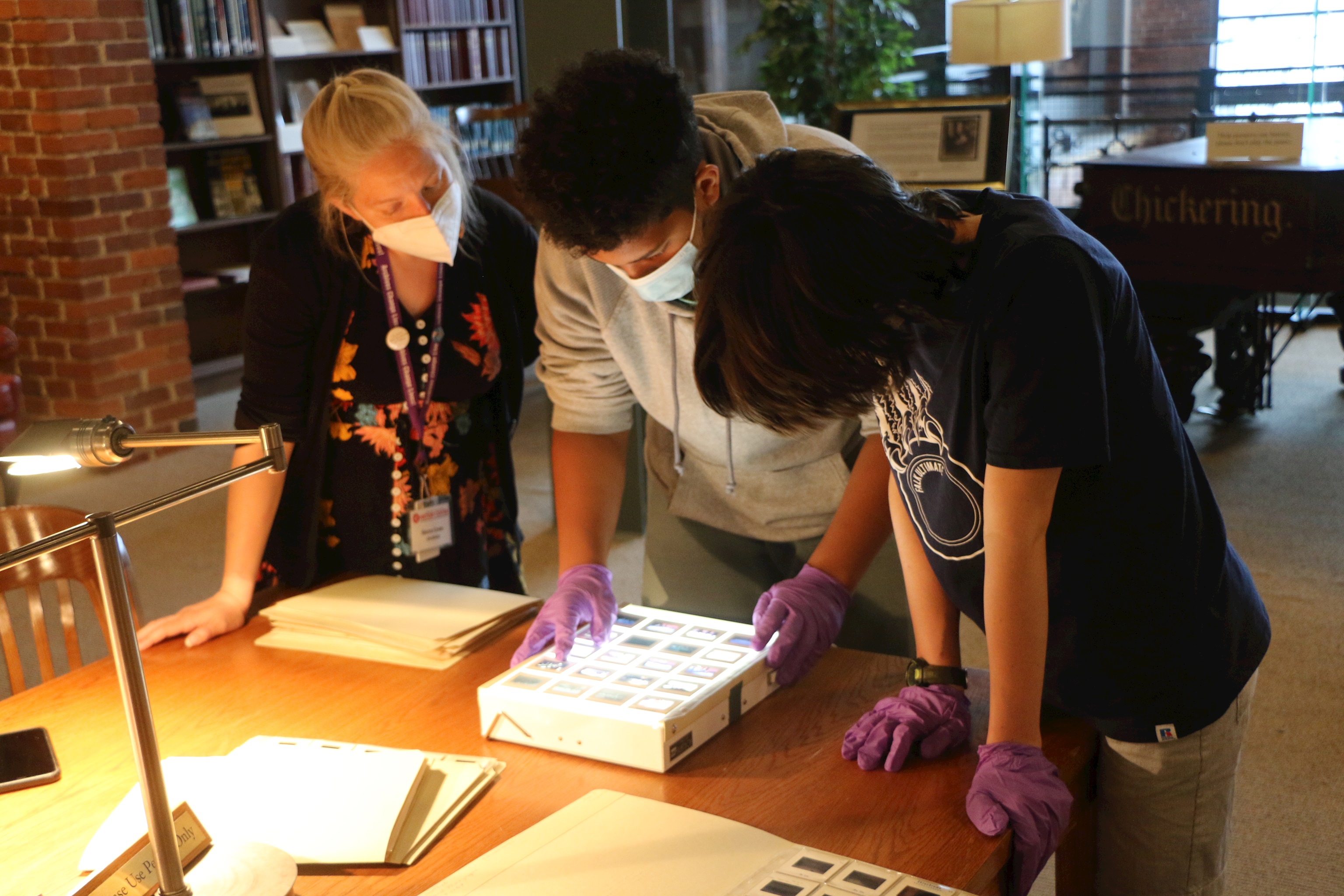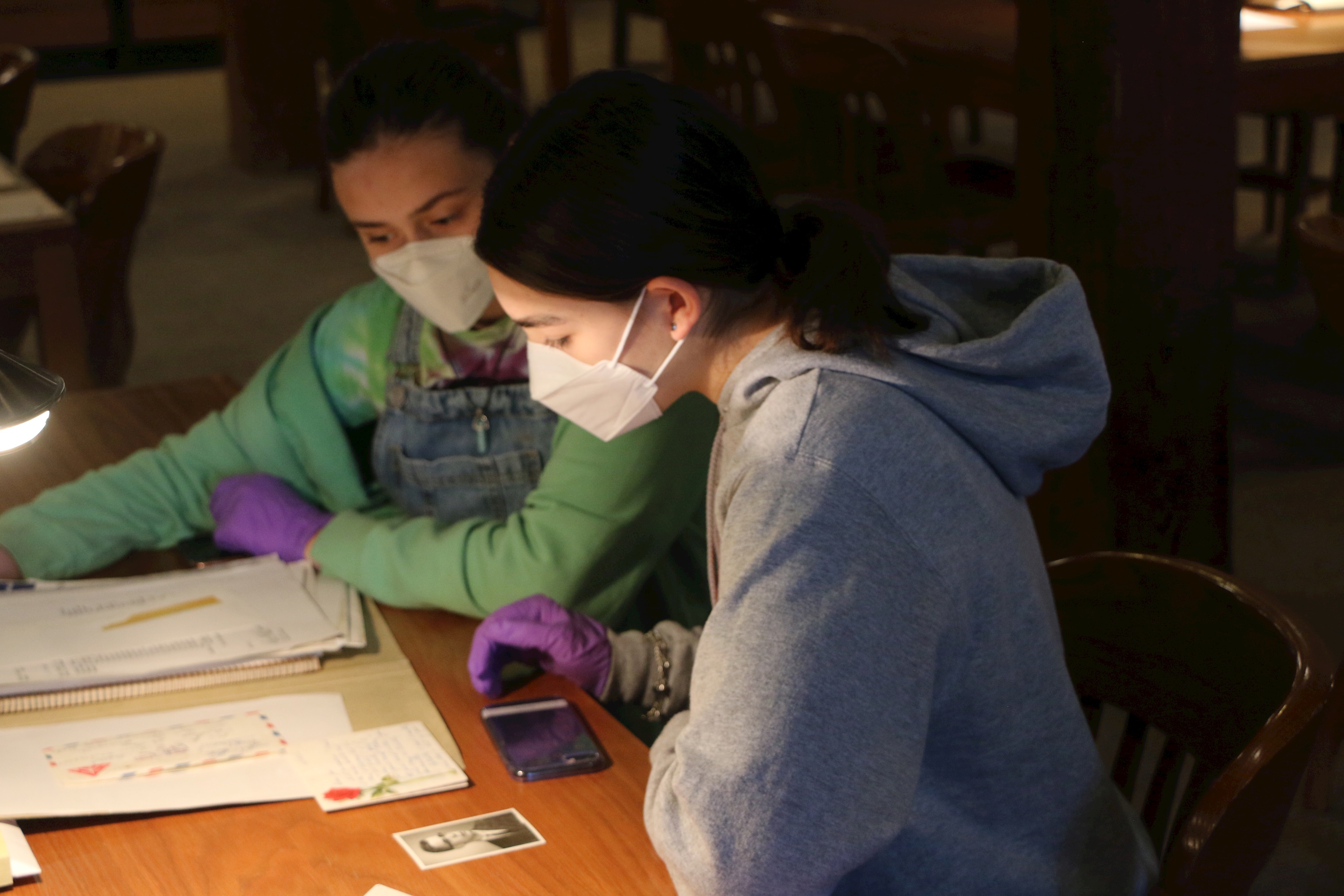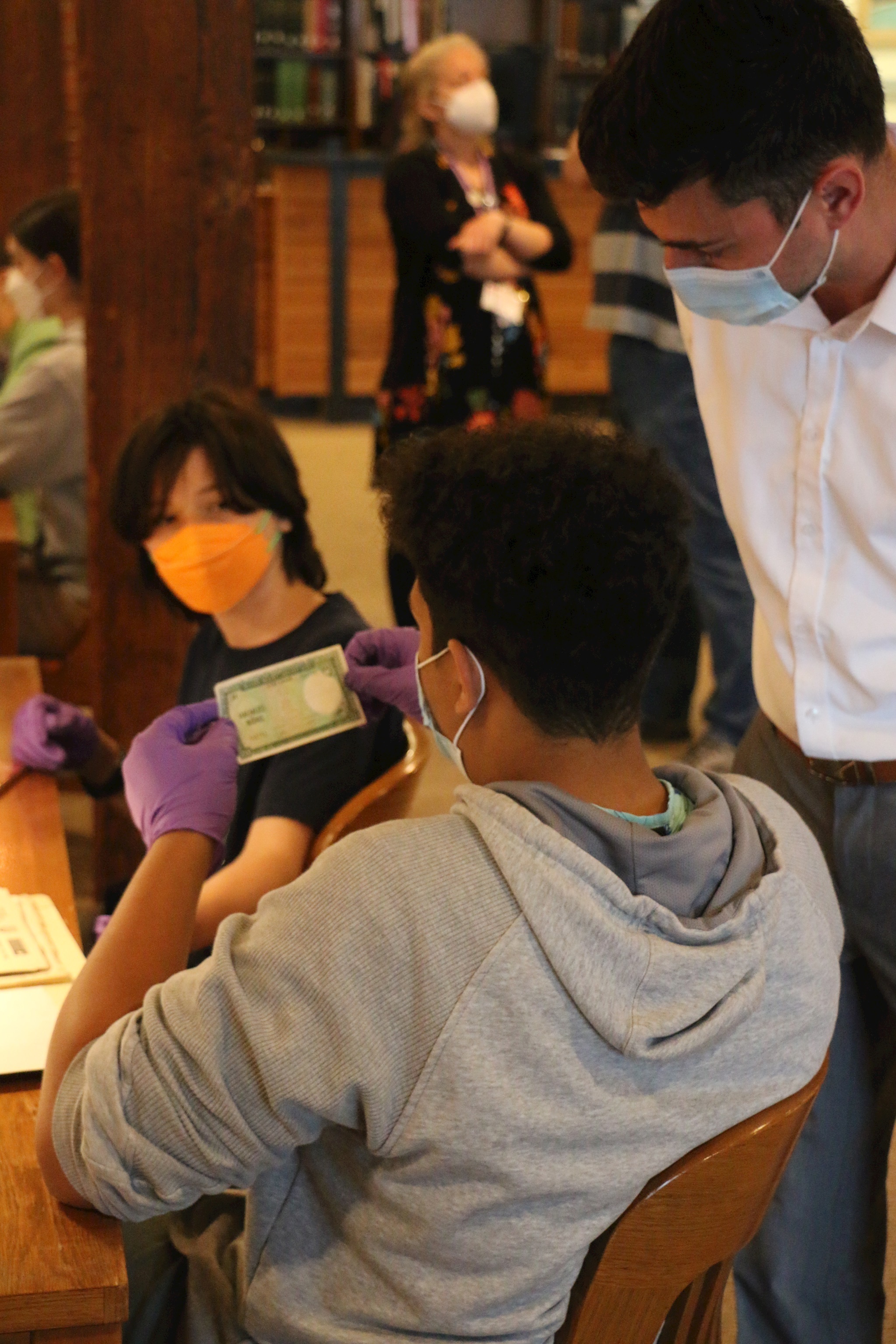Discover our
Home for Learning
- Contact
- 412-624-8020
- [email protected]


“How do we live together?”
That’s the question Greg Wittig’s eighth-grade Falk School social studies class is considering as they page through troves of primary documents here in the archives of the Heinz History Center. They’re examining files documenting the lives of Pittsburgh-area men and women who served in the Vietnam War. Decked out in purple rubber gloves to protect the sometimes-fragile documents, some of which are more than 50 years old, students examine materials ranging from photographs and letters home to scrapbooks and even Vietnamese currency kept as souvenirs.
At one table, a group of students huddles with Wittig and student teacher Grant Schaeffer, who designed this unit of the class and the final project after taking over the class in January (with Wittig serving as his mentor). They’re studying the insignia on a yellowing newspaper clipping in one service member’s file. Wittig pulls out his iPhone, conducting some on-the-spot research, and soon announces, “It’s the 4th Infantry patch.”
Asked what has surprised her in the archives today, student Joanna says she was struck by one file containing a booklet for soldiers returning to civilian life after the war.
“They didn’t know how to live in society after the war,” she says.
 At another table, Schaeffer bends down to decipher the cursive handwriting of a mother’s letter to her son in Vietnam, reading aloud to two students.
At another table, Schaeffer bends down to decipher the cursive handwriting of a mother’s letter to her son in Vietnam, reading aloud to two students.
“‘Settle for the best and you’ll find it, I hope soon,’” he reads. “‘I just wanted to wish you a most special holiday season and a future of all that is good.’”
At the letter’s close, he struggles to decipher the mother’s writing:
“‘I love you . . . 7-7 worlds?’” he guesses. “Maybe an inside joke. Not sure.”
The point of taking this deep dive into history, says Wittig, is to see the human side of war, and to understand it as something that affects real people, not merely “something that happens ‘over there.’”
Addressing the students seated before service members’ files, Wittig says, “You’re looking at a human life. Someone with a mother, a father.”
It’s a simple but powerful lesson, and one that has informed much of the class’s work this year, tracing the effects of war from World War I up to Vietnam. Utilizing video testimonies and primary documents, students have sought to put human faces to events in Europe, Korea, and Southeast Asia. Now, they're exploring what those faces looked like here in Pittsburgh.
The individuals whose files the students are exploring range widely. Leroy Bernard Mudd, a member of the U.S. Navy from West Mifflin, went missing after diving off a barge to recover a football. His file includes letters home and telegrams received by his family after his remains were discovered. Rose Gantner, a native of Pittsburgh’s South Side, enlisted with the Supplemental Recreation Activities Overseas. Affectionately known as “Donut Dollies,” members of this group ran games and activities to provide soldiers with much-needed recreation and distraction. Gantner’s experience working with soldiers suffering from what is now known as post-traumatic stress disorder informed her later career as a counseling psychologist.
These are just a few of the people and the lives collected here in the History Center’s archives. In most cases, the materials were donated by service members’ families, says Sierra Green, History Center archivist.
 “The families know there’s historical significance to these documents,” says Green. “There’s a strong connection to this region. And a big part of the work we do here is preserving Western Pennsylvania history, especially as it intersects with bigger topics, like the Vietnam War.”
“The families know there’s historical significance to these documents,” says Green. “There’s a strong connection to this region. And a big part of the work we do here is preserving Western Pennsylvania history, especially as it intersects with bigger topics, like the Vietnam War.”
Falk School students will take their observations and impressions from today’s field trip and incorporate them into a final project, the exact form of which will be left up to them. One student’s project might be a painting or an essay, while another student might address the matter of how we live together by staging an in-class debate presenting two very different answers to that question.
Following the class’s prior focus on other conflicts, Schaeffer led students on a deep dive into Vietnamese history, reaching back before French colonialism to provide students with the Vietnamese outlook leading up to the conflict. Then the class shifted to look at the American perspective, viewing the U.S. philosophy of containment through the lens of earlier conflicts such as World War II and the Korean War.
In asking students to use their projects to answer the question “How do we live together?” Schaeffer says, “I’m interested not in getting an answer, but in the conversation we end up having. How do we accommodate different perspectives and allow for diversity?”
His approach, as part of Wittig’s broader vision for the class, highlights the ways in which a Falk education prepares students to keep learning and asking questions throughout their lives.
“Ultimately,” Schaeffer adds, “social studies is in a position to help people have these kinds of conversations and live together.”
